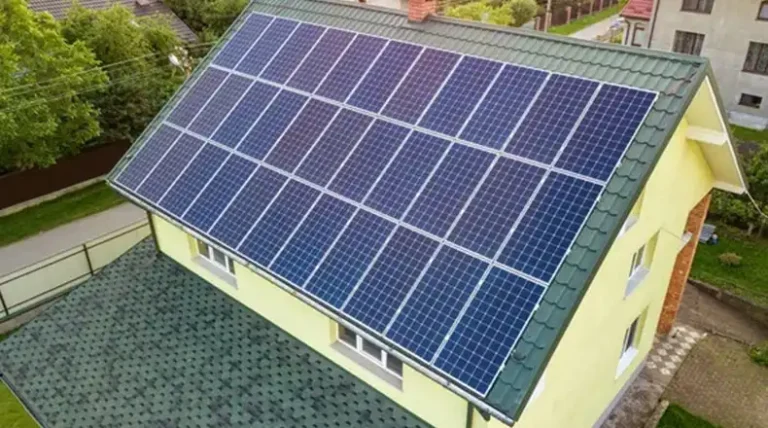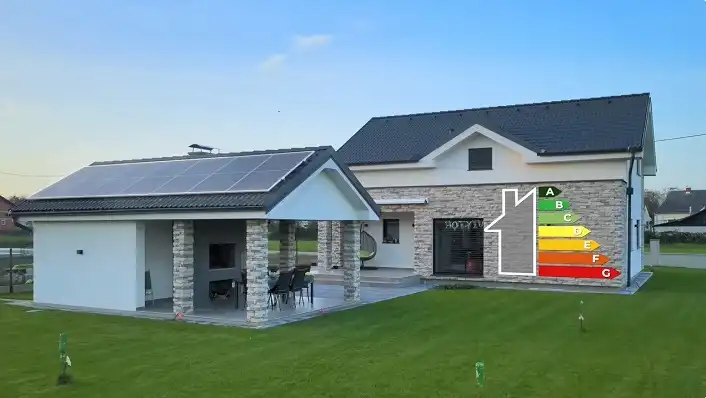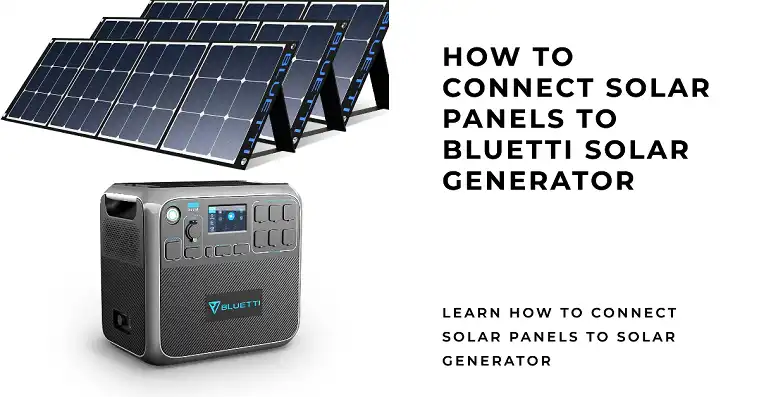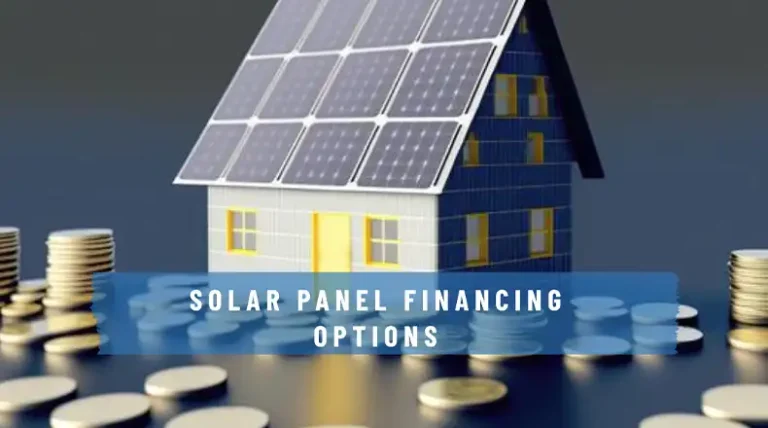Solar Battery Storage Options For Homeowners Explained

Solar batteries are becoming an increasingly popular addition to home solar panel systems, allowing homeowners to store excess energy produced during the day for use at night or during power outages.
These energy storage systems can significantly enhance the functionality and value of a solar installation. But with a variety of options on the market, choosing the right solar battery can be complex.
This article will explore how solar batteries work, the main types available, key factors to consider when selecting a battery, top models to consider, and the potential benefits and costs involved.
By understanding the essentials of solar battery technology, homeowners can make an informed decision about whether adding energy storage makes sense for their situation and goals.
How Solar Batteries Work
Solar batteries serve as a storage system for the excess electricity generated by your solar panels.
During sunny days when your panels produce more power than your home is using, that extra energy can be stored in the battery instead of being sent back to the grid.
You can then draw on this stored power later when your panels aren’t producing electricity, such as at night or on cloudy days.
The basic process works like this:
- Solar panels generate DC (direct current) electricity
- An inverter converts the DC to AC (alternating current) for use in your home
- Excess AC power charges the battery
- When needed, the battery discharges stored DC power
- A second inverter converts the battery’s DC power back to AC for home use
One key distinction in how solar batteries are set up is whether they use AC or DC coupling:
AC coupling: The battery has its own separate inverter. This setup is more common for adding a battery to an existing solar system.
DC coupling: The solar panels and battery share one hybrid inverter. This is often more efficient but requires compatible equipment.
Understanding these basics can help you grasp how a solar battery would integrate with your home’s energy system. Now let’s look at the main types of batteries available.
Types of Solar Batteries
There are three primary types of batteries used for home solar storage:
Lead-acid Batteries
These are an older, well-established technology. While affordable, they have shorter lifespans and lower efficiency compared to newer options. They’re still sometimes used in off-grid systems.
Pros:
- Lower upfront cost
- Established technology
Cons:
- Shorter lifespan (500-1000 cycles)
- Lower efficiency
- Require more maintenance
Lithium-ion Batteries
Currently the most popular choice for home solar storage. They offer better performance and longevity than lead-acid batteries.
Pros:
- Longer lifespan (3000-5000 cycles)
- Higher efficiency
- Compact size
- Low maintenance
Cons:
- Higher upfront cost
Flow Batteries
A newer technology that stores energy in liquid electrolytes. While promising for grid-scale storage, they’re not yet common for residential use.
Pros:
- Very long lifespan
- Can be fully discharged without damage
Cons:
- Lower energy density
- Higher cost
- Larger size
For most homeowners considering solar storage today, lithium-ion batteries are likely to be the best option due to their combination of performance, lifespan, and decreasing costs.
However, it’s worth discussing all options with a qualified solar installer to determine the best fit for your specific situation.
Key Factors to Consider When Choosing a Solar Battery
Selecting the right solar battery involves weighing several important factors:
Capacity and Power Output
Capacity (measured in kilowatt-hours or kWh) refers to how much energy the battery can store.
Power output (measured in kilowatts or kW) indicates how much electricity it can deliver at once. You’ll want to match these to your home’s energy needs and usage patterns.
Round-trip Efficiency
This measures how much of the energy put into the battery can be retrieved for use. Higher efficiency (90%+) means less energy is lost in the storage process.
Depth of Discharge (DoD)
This indicates how much of the battery’s capacity can be used before recharging is needed. A higher DoD allows you to utilize more of the battery’s capacity.
Warranty
Look for warranties that guarantee performance for 10 years or more, ideally with protection against a certain number of charge cycles or energy throughput.
Modularity
Some battery systems allow you to start small and add capacity over time. This can be beneficial if your energy needs grow or if you want to spread out the cost of a larger system.
Cost
While important, don’t focus solely on upfront cost. Consider the total cost of ownership, including expected lifespan and efficiency.
By carefully evaluating these factors, you can select a battery that aligns with your energy goals and budget. Let’s now look at some of the top options on the market.
Top Solar Battery Options
Several manufacturers offer high-quality solar batteries for home use. Here’s an overview of some leading models:
Tesla Powerwall
One of the most well-known options, the Powerwall offers:
- 13.5 kWh capacity
- 7 kW peak / 5 kW continuous power output
- 90% round-trip efficiency
- 10-year warranty
Enphase IQ
Battery Available in different sizes, the IQ Battery system features:
- Modular design (3.36 kWh per unit)
- 96% round-trip efficiency
- 10-year warranty
- Microinverter technology for easy integration
LG Chem RESU
Another popular choice, the RESU line includes:
- Multiple capacity options (9.8 kWh – 16 kWh)
- 90%+ round-trip efficiency
- 10-year warranty
- Compact design
While these are some of the most popular options, there are many other quality batteries on the market. It’s important to compare specifications and get quotes from multiple installers to find the best fit for your home.
Benefits of Solar Batteries
Adding a battery to your solar system can provide several key advantages:
Backup Power During Outages
Unlike standard grid-tied solar systems, a battery allows you to keep powering essential appliances during a blackout.
Time-of-Use Rate Optimization
If your utility charges higher rates during peak usage times, you can use stored battery power instead of expensive grid electricity.
Increased Energy Independence
Batteries allow you to use more of the solar energy you produce, reducing reliance on the grid and potentially saving money over time.
Better Energy Consumption Monitoring
Many battery systems come with advanced monitoring tools, giving you greater insight into and control over your energy usage.
By understanding these benefits, you can better assess whether the added investment in a battery makes sense for your situation.
Cost Considerations
The cost of a solar battery system can vary widely based on capacity, brand, and installation factors. Generally, you can expect to pay:
- $8,000 to $15,000 for a standard home battery system
- $15,000 to $30,000 for a larger capacity or multi-battery system
Several factors can influence the total cost:
- Battery capacity and power output
- Installation complexity
- Additional required equipment (e.g., special inverters)
- Local labor rates
It’s important to note that costs have been trending downward as the technology matures and production scales up. Additionally, there are incentives available that can reduce the net cost:
- The federal Investment Tax Credit (currently 30%) applies to battery systems charged by solar
- Some states and utilities offer additional rebates or incentives
- In some areas, batteries can participate in “virtual power plant” programs, providing additional financial benefits
When evaluating costs, consider the potential savings from reduced electricity bills and increased energy resilience over the battery’s lifespan.
Conclusion
Solar batteries represent a significant advancement in home energy technology, offering increased control, reliability, and potential savings for solar homeowners.
While the upfront cost can be substantial, declining prices and available incentives are making batteries an increasingly attractive option. As you consider whether a solar battery is right for your home, remember to:
- Assess your energy needs and goals
- Compare different battery types and models
- Get quotes from multiple reputable installers
- Consider both upfront costs and long-term value
With the right system, a solar battery can enhance your energy independence, provide peace of mind during outages, and potentially save you money over time.
As technology continues to advance and prices decrease, home energy storage is likely to become an even more integral part of residential solar systems in the future.
Frequently Asked Questions
What Is The Best Option For Solar Batteries?
Lithium-ion batteries are widely considered the best option for solar batteries due to their high energy density, long lifespan, and efficiency.
They can store a significant amount of energy in a relatively compact size, recharge quickly, and require minimal maintenance, making them ideal for both residential and commercial solar energy systems.
How Should Solar Batteries Be Stored?
Solar batteries should be stored in a cool, dry, and well-ventilated space such as a garage, loft space, cupboard, or cabinet.
It’s important to keep them away from direct sunlight and extreme temperatures to ensure they operate efficiently and have a long lifespan.
Is Solar With Battery Storage Worth It?
Solar with battery storage is generally worth it for homeowners, as it allows you to store excess energy generated during the day for use at night or during power outages.
This not only reduces reliance on the grid but also can lead to significant savings on electricity bills over time, especially in areas with high energy costs or unreliable power supply.
What Is The Average Cost Of A Solar Battery?
The average cost of a solar battery varies depending on the capacity and type, but typically ranges from £3,000 to £7,000 for residential systems.
This cost can be influenced by factors such as brand, installation fees, and additional features like smart technology or enhanced warranties.
What Are The Main Drawbacks To Storing Solar Energy In Batteries?
The main drawbacks to storing solar energy in batteries include the high initial cost, limited lifespan, and potential for decreased efficiency over time. Additionally, battery storage systems require regular maintenance and can have environmental impacts due to the materials used in their production and disposal.





